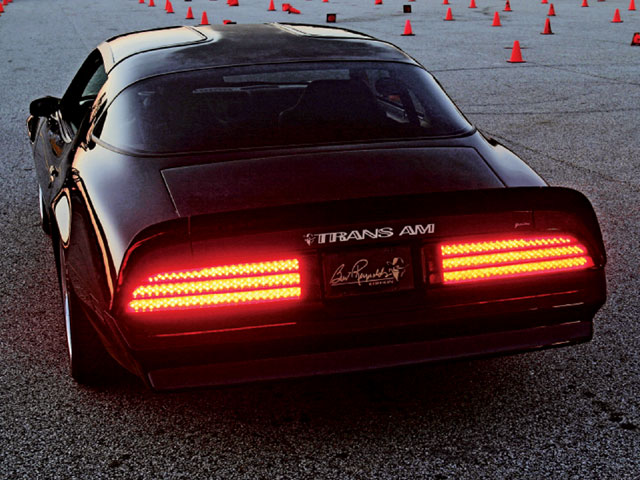The globe refuses to warm. What happened, Al?
The opposite is happening. The globe is cooling. Brutally so. Here in the “South” – where it’s supposed to be warm – it has been getting colder and colder with each passing year. Fall has transitioned from balmy to brutal. Two weeks shy of Thanksgiving and it’s going to dip into the teens overnight. “Winter” is still – technically – weeks away.
Our cars suffer, too.
How to ease their pain – and perhaps, ours? Here are a few suggestions that ought to help:
Polish and wax your windshield –
Your car’s windshield is also a bug and other flying debris shield. It gets splattered, scratched, caked and chipped. Run your hand over the windshields of a brand-new car and a five-year-old car. The difference in surface smoothness will usually be obvious. Using a polish wax – which contains mild abrasives – will clean up the glass, restoring most of its original smoothness. 
That, in turn, will make the wipers more effective – and ought to increase their useful life, too.
A just waxed-windshield will wick away water noticeably better – often sufficiently (in light rain) that one doesn’t need to use the wipers as much, which is another way to extend their useful life. This is important, given the cost of replacement blades.
But being able to see clearly is priceless.
Additional tips: If you park outside in cold and wet weather, try to avoid leaving your wiper blades to freeze onto the windshield. Most windshield wipers have flexible arms that allow you to manually bend them forward and outward so that they are not contacting the glass. Leave them that way overnight. In the morning, scrape the windshield free of ice before you turn on the windshield wipers. If you don’t, the rough surface – the ice on the glass – will make short work of your blades and they will smear rather than clear.
Also – if your car has automatic/intermittent wipers – be sure you let them cycle completely before you turn off the engine and leave the car for the night. People sometimes just key the engine off, with the automatic wipers in mid-sweep. Left overnight, the blades freeze on the glass. When you go to start the car next morning, the electric motor that operates the wipers tries to finish that final sweep that was interrupted the previous evening – but the blades are stuck to the glass. This puts lots of stress on the motor and the usually plastic bushings inside the mechanism, which will eventually result in their premature failure – probably at a most inconvenient and extremely cold moment.
* Now is the time to check your battery terminals –
You’ve no doubt read – and probably know – that a battery which seems healthy in warm weather may turn sick on you suddenly in cold weather. Reason being, it takes more amps to start a cold engine on a cold day – and battery performance dips with the mercury. But a poor connection can also make a battery that’s strong seem weak.
To avoid that awful click-click-click (and no start scenario) pop the hood and check that both terminals are tight – not loose like a Hillbilly’s teefus.
Now, are they clean?
If you see flaky white stuff around the connections, they definitely need to be cleaned. Auto parts stores sell specialized brushes for this purpose, but you can also use clean steel wool or Scotchbright abrasive pads or even fine sandpaper. So long as you end up with a clean/shiny metal surface. Reinstall the clamps, being sure they’re tight but not overtightened – and then mist each terminal with a spritz of WD-40, which will leave a protective coating on the surface.
Check them again (and re-clean, if need be) in six months’ time.
* Replace conventional oil in the engine and manual transmissions/axles with synthetics – 
Synthetic lubricants cost more than conventional lubricants. But the payoff is noticeably easier start-ups on very cold days and – in vehicles with manual transmissions – smoother gear engagement/operation (as well as less wear and tear). You will likely also see a slight but noticeable uptick in your gas mileage – the result of reduced friction and faster warm-ups. Synthetics are much superior at the extremes of temperature – extreme cold and extreme heat. They flow better than conventional lubricants – which is why you’ll audibly and otherwise notice your car’s engine starting with less apparent struggle when it’s in the minuses outside. And the engine should warm-up faster, too – which means you’ll be warmed up faster as well.
Caveat: Some late-model vehicles with manual transmissions require the use of automatic transmission fluid (ATF). Do not use oil – synthetic or otherwise – in such a vehicle.
It sounds like a bad idea, but – if you want to avoid AC repair bills come summer – it’s actually a really good idea. The AC system in your car contains both refrigerant and lubricant. Neither of which circulate when the AC’s not in use. The lubricant is supposed to keep seals pliable (rather than brittle) so as to prevent the refrigerant from leaking – which will render your AC not working.
By cycling the AC on for about 5-10 minutes every couple of weeks during the winter months, you’ll decrease the odds of that happening. It’s not necessary to have the thing set on “max cool,” either. Just so the AC’s actually on.
PS: Running the AC has another benefit. It dehumidifies the air, which helps keep the windshield from fogging up. Try it yourself and see.
If you value independent media, please support independent media. We depend on you to keep the wheels turning!
Our donate button is here.
If you prefer to avoid PayPal, our mailing address is:
EPautos
721 Hummingbird Lane SE
Copper Hill, VA 24079
PS: EPautos stickers are free to those who sign up for a $5 monthly recurring donation to support EPautos, or for a one-time donation of $10 or more. (Please be sure to tell us you want a sticker – and also, provide an address for us to mail the thing to!)












More warming please. Nov. 18, 2014, in South Buffalo, N.Y.
http://a.abcnews.com/images/US/AP_SNOW_141119_DG_4x3_992.jpg
18 degrees here in SW Virginia as I type this.
No wonder they had to re-name it “climate change.”
“Global warming” was too obviously idiotic, even for the idiots!
Snow Miser for the win.
https://www.youtube.com/watch?v=dPrbccEdI5o
I need some help with regular oil vs synthetic oil. My car has 170K miles and about 20K miles ago we switched to synthetic oil. YES, I now have an oil leak; never had a problem before. The mechanic says to do a valve cover gasket change-expensive. Is there another solution? Switch back to regular oil? Tighten something? Is there an additive that would swell the gasket? Or just have the work done & move on?
Thanks!
Hi RW,
Is your car FWD with a V-6 (and the leaking gasket on the head adjacent to the firewall)?
If it’a not (fingers crossed) … if it’s a four cylinder engine or a V-8/V-6 in a RWD (or RWD-based) car, replacing a leaky valve cover gasket shouldn’t be either particularly difficult or expensive. The gasket itself is definitely not. The main issue is labor.
It is possible one or more of the bolts securing the valve cover has worked loose, in which case, tightening the loose bolts might just do the trick. But if the gasket has shrunk or broken, tightening the bolt will not fix the problem. Be very careful not to overtighten anything. A warped valve/cam cover can be expensive to replace – and you most definitely do not want to snap off a bolt in the head…!
‘Nother tip: If you’re a cheap bahstahd like I am, and cut your windshield washer fluid with water during the summer, stop doing that when it gets cold! I have forgotten many times in the past, then the ww fluid resevoir gets iced up.
I have been told that it is unwise to use synthetic oil on a car that has over 50,000 miles on it and has not used synthetic previously.
Hi John,
Yeah, I’ve heard that too. Allegedly, there is the possibility of seeps/leaks through older seals/gaskets. But I’ve never encountered this. In any event, it’s probably irrelevant with regard to manual transmissions and rear axles since these cases are bolted together pretty tightly and I doubt very much that using synthetic would result in leaks.
Eric and/or John,
Read your comments re synthetic oil. My car now has 170k miles on it. We did go to synthetic oil about 20k miles ago and we do now have an oil leak. Never had any leak problems before that. Mechanic says to do a valve cover gasket job-expensive. Do you have any recommendations? Go back to regular oil? Tighten anything? Or is there some kind of additive that would swell up the gasket to seal it? Or replace gasket & move on?
Thanks for your thoughts!
I just saw RW’s reply in the queue and hence this branch. What happens is that sludge in the engine seals up gaskets that have failed. The synthetic oil destroys the sludge over time. It cleans the insides of the engine. Then there is a leak. It just reveals what is already there.
For drive line, it’s not going to matter. There shouldn’t be sludge holding stuff in. If there is, well there’s probably bigger problems.
RW, replacing the gasket is what it will take to do it right. It would have probably leaked sooner or later with regular motor oil, it had already failed. There are kludges like over tightening the valve cover bolts and things like that, but if a bolt snaps you’ll have an even bigger and much more expensive problem. I am guessing you have a FWD V6 where the intake manifold has to be removed to get at the leaking valve cover gasket? Also I knew a car fitting that description that ended up with such a leak and it was on synthetic from new.
Brent, thanks very much for your reply. The car has received oil changes every 3000 miles since it was brand new so I’m kind of surprised there would be sludge build up. But, a mechanic I’m not. Guess we just might need to have the gasket work done as soon as I can find the $$.
Ok, 170K miles with frequent changes. Sometimes the valve cover gaskets just go from age and use. Nothing to do with the oil. So long as it’s not the firewall side under the intake runners of a FWD car with a V6 it shouldn’t be too difficult to do.
I suppose politicians think the world is warming with all the hot air they create in DC.
That’s an old one, but no less true for all that.
Are you sure about that “Polish and wax your windshield” idea — – never heard of waxing a glass windshield or any other kind of glass window (??)
Any specific wax brands intended for that purpose ?
Cleaning/Waxing plexiglass windshields on boats, airplanes, etc is pretty common though.
The old standard “Bon Ami” household cleaner has a mild abrasive and is good for polishing worn windshields, but it has no wax.
When I worked with cars 20 years ago everyone loved Rain X, I don’t know if anything better has come along. Their website says its available at walmart, target, amazon and all the major car supply stores.
http://www.rainx.com/product/glass-and-cleaners/rainx-original-glass-treatment/#.VGijKWd0yHs
Rain-X works so well I’ve seen windshields in rain that hardly needed the wipers. The water sort of just slipped off.
Rain-X is awesome! Highly recommended.
I use it on all vehicle glass including headlights, my motorcycle helmet shield, bathroom mirror, house windows……
Just beware, once you start you are hooked as it will cause horrific wiper streaking as it wears off and needs monthly reapplication, YMMV. Rubbing alcohol on a rag will remove it if needed.
BTW use it on the inside of your cars glass and you can make it through a winter blizzard without a defogger. Yes, firsthand experience. 🙁
I thought I was having a streak of bad luck buying windshield wiper blades. They would leave lines across the windshield, maybe it’s because my windshield is heavily pitted and scratched up, rather than cheap wiper blades? I’ll have to give polishing the windshield a shot, I never thought of doing that before.
I’ve always found it to be difficult to remember to turn on the A/C during the Winter months. It’s right up there with remembering to engage the 4×4 once a month for ten miles. Every 4×4 owners manual that I’ve read says to put it into 4×4 once a month. I doubt most people put it into 4×4 more than once per year. I wonder what the results are from not putting it into 4×4 once per month? Just increased wear that only shows up ten years down the line and a little less fuel economy?
Finding a place to put it into 4×4 is not always easy nor convenient. I seem to recall the manuals said it was ok to do so when there was a heavy rain, but heavy rains have been kind of rare lately.
I asked a couple of farmers with land near the city if I could run the 4×4 lightly on their property, before I could even get a chance to offer some money for the privilege, they all said “no” while mentioning the word “liability” as if the decision was out of their hands completely.
At least with older stuff (my newest vehicle is a 1990) 4WD HI RANGE can be used on regular roads…. Barring that maybe look for a gravel parking lot or something…..
It’s just to “exercise” the system a little to keep everything working correctly
I’ve always been told you should Never run in 4×4 in Any range on dry pavement. Older or newer. Not even for a little bit. “wheels need to slip” they would sternly say, or something along those lines.
Who is right, and why?
Wheels do need to slip. The newer 4×4 systems can handle dry driving better, but any time you have more parts engaged, it means more wear and tear. No getting around it. If you feel the need to exercise your 4×4, find some dirt or gravel to do so. It is just easier on it.
What they really mean is that you should never lock a differential on a high-traction surface. Doing so means that left/right (and/or front/rear) wheels will apply a lot of torque to the differential — torque that would normally be dissipated by the carrier inside the differential spinning. But since you locked it, it can’t, so the torque builds up until either a tire slips, or until something expensive breaks.
You should check your owner’s manual – there are some other systems which have the same restriction — like Honda’s VTM-4 when you’ve pushed the button on the dash.
All you need is a dirt road to exercise the 4WD. It’ll provide enough slippage so that the driveline doesn’t bind.
I can understand the farmers declining you permission to run on their land – they don’t know you, and as far as they know, you’re going to get stuck and need their tractor to pull you out.
Many cars automatically run the airconditining compressor when “Defrost” is selected. This makes sure the defrost air is low in humidity. Check your car’s manual, or better yet, just listen for the compressor to run when you select “Defrost”.
Helot, I doubt a full 10 miles is required. The oil only has to splash the bearings, so maybe 2 miles is enough.
Remember to check the cooling system before summer returns. It’s often neglected over winter and for the first few hot days I see one car every day overheated at the freeway offramp lights. Seems to catch ’em every year.
CAFE has become part of the plan for the future. I think Obama’s recent ‘deal’ with China says what the plan is quite well.
http://stevengoddard.wordpress.com/2014/11/13/obama-climate-deal-to-triple-co2-emissions-by-2030/
Eric, don’t you know it’s hot? This is the warmest year on record. The state intellectuals say so, so it must be. They are experts. They expertly adjust and correct the data for reasons that are beyond our understanding. We are just idiot simpletons if we think they should just use plain old temperature data. It is these experts through virtue of their degrees and positions that can pull the true meaning out of the data. They say it’s warm so it must be warm.
http://www.theguardian.com/environment/2014/oct/20/2014-on-track-to-be-hottest-year-on-record-says-us-science-agency
And here’s how they do it:
http://stevengoddard.wordpress.com/2014/04/26/noaa-blowing-away-all-records-for-data-tampering-in-2014/
I know, Brent… I know!
It seems the whole world’s gone nuts sometimes, doesn’t it?
Lots of newer (and even not so new) vehicles will automatically turn on the AC when you turn on the defrost/defog. Most I have seen will let you turn it back off, but it is another thing to remember.
Anyone else here tried the Rain-X windshield fluid? It seems to help some, although nothing but wipers seem to work with a lot of the fine mist/road spray we get around here.
A minor gripe about my Sportwagen – the wipers go down under the back edge of the hood, so cannot be lifted as Eric suggests. And the rear wiper will not stay up. Not to mention that, so far, I have not found replacements for that rear wiper anywhere except VW.
Phillip, check the VW manual. My VW keeps the wipers below the hood but there is a service position that raises them. I believe you have to hit the mist function on the wiper stalk after keying off. The manual should have the exact procedure though.
Thanks Matt, I will look into that.
PtB, some vehicles don’t even have a compressor switch or the option of turning it off when you go to defrost and that sucks. I just unplugged the compressor on my truck so it wouldn’t have the compressor engage when in defrost. That feature does make defrost faster but it’s a moot point for the most part on a warm engine.
I tried Rain-X at least over a decade ago and used up a couple bottles and one of their competition(can’t recall the name, may have been STP). While it works fine, I never found any real advantage to waxing. I waxed my shiny red car, my first car, constantly. This was back in the day of chrome, yep, real chrome, around the windshield, back glass and even side glass. One day I just waxed the entire car thinking what the hell could it hurt, it’s just wax. Turns out, the chrome stayed shinier just like the paint, and the windows would shed rain like it was allergic, just couldn’t hang around. I’ve been using wax on my windows ever since. You have to be careful not to let any dry that gets on that black rubbery crap around every window these days. I’ve used all sorts of wax and it all worked well. I kinda liked the Turtle cleaner wax. I have used the GM convertible window cleaner for lots of things and it’s a good scratch remover. Now days though, there are lots of good de-scratchers I guess you’d call them. Plain old rubbing compound works well to clean windows and from my experience, no need to get the “fine” stuff.
I’ve been big on pulling the wipers away from the glass for decades now, ever since they started making them to where you could. Before that, I’d wrap a plastic sack around them if they had to stay outside.
Something I tried that works well is pour boiling water on frozen windows. You’ll never have to clean that window again. Seriously though, I have countless times taken room temp water and poured it right above the windshield and windows and let it slowly remove the ice, much easier than scraping and in west Tx. you are inevitably scraping dirt across the glass. In this country, scraping ice will teach anyone who can see a big lesson…..don’t. If you have a water hose that’s not frozen you can just rinse the car and remove all ice. I do like to ease into it though, don’t want too much of a temp difference when doing this.
A block heater is a boon though no matter where you live if it gets below freezing by much. You can install a timed receptacle to have it come on whenever you want if you’re concerned about your electric bill. I could never really see any difference and have left as many as four vehicles(one was a big 4WD tractor)plugged in fairly much all winter.
I know, I know, it doesn’t get really cold in Tx. That’s what I was thinking the night I was repairing the lines in the pumphouse and stepped off into knee deep water when it was -17 with a 35mph wind. I just wish yankees had all the cold weather. I have frozen my butt off this week working on big rigs. And now we have a really bad boy supposed to move in tomorrow with lots of snow/ice/sleet and my plate is already full for next week. Yep, this global warming is killing me.
I’ve been using hot tap water to thaw stuff on cars since I was kid. Works best when it is really really cold. Why? Because it is water and creates more of a mess when it freezes. Although you can unstick things, they have to keep moving until the added water freezes… or be where you can dry it once the door latch or whatever is open. but when it’s really cold, below zero F, the hot water does its thing and then evaporates into the dry cold air if the sun is out warming the car’s steel.
Engine heaters are the only way to go around here. The cars start much easier, warm up faster, and presumably the engines will last longer. I mentally roll my eyes every time I hear someone remark that “my car starts fine without plugging it in.” Such folks have no understanding of what else the heater works for.
Sheet. I’m thinkin’ maybe I don’t actually live in, “The Northland” afterall? The guys in Texas always said I did. And here all these years I thought I did too. I mean, I don’t “need” an engine heater. I Never heard anyone say, “Engine heaters are the only way to go around here.”
The thought makes me shiver that there are colder places than here.
And, “here” is colder than some parts of Alaska most of the time!
I’m Not being sarcastic, btw.
I guess in bizarrocloverland, living near the ocean causes you to live further south because the air temperature is milder in the winter. Through a cloveric miracle, your latitude fluctuates with temperature.
Because Austin TX, and New York, NY are both have the same temperature of 37F right now. Clover knows they must both be at the same latitude because it gets colder the further north you go. Basic cloverian reasoning at work.
How Does Ocean Temperature Affect Air Temperature?
http://www.wisegeek.org/how-does-ocean-temperature-affect-air-temperature.htm
Sure your map says Austin is at 30N and NYC is at 41N latitude. But clover knows better, and is unconcerned with your libertarian fantasies.
I spent a few years in the NE corner of Iowa, close to both WI and MN. My last winter there we had 30 consecutive days that never got above freezing, and went below 0 (F) every night. Believe me, I kept the Ford 302 plugged in, even though it took a 50′ extension cord to do it.
“Something I tried that works well is pour boiling water on frozen windows. You’ll never have to clean that window again.”
You betcha!
I’ve poured scalding hot water on my windshield for years, never had one crack. I hate mornings and I usually have jus enough time to get there, so it get the bucket. One time about 15 years ago I had this old Delta 88 that the door would freeze shut. It was funny watching the cop try to open it to arrest me one morning for not paying a ticket. They were alright though, no handcuffs, didn’t notice the expired proof on insurance, and they weren’t even going to take me in unless the DNR was going to come get me.